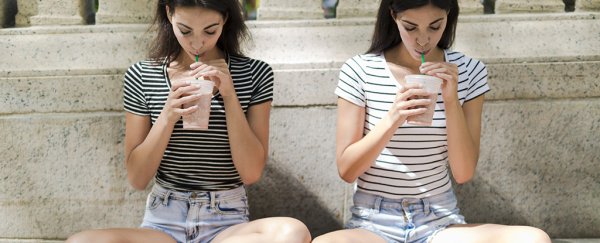Telling faces apart has been an important social skill in the evolution of our species. But our ability to recognise faces actually varies much more than you might think.
On the one end of the scale are those with face blindness – a condition where people struggle to recognise faces at all. At the other end are 'super-recognisers', people who can memorise and recall faces in unremarkable or fleeting circumstances, sometimes years after the fact.
So, where on that scale do you sit? Researchers at the University of New South Wales (UNSW) in Australia have just published research on a test that could give you an indication. The UNSW Face Test is approximately 15 minutes long and is notoriously difficult. Through two parts, the test shows you multiple pictures of faces and asks you to confirm which are of the same people.
Sounds easy enough, but wait. While the first time you're shown a particular face it's a clear and highly detailed portrait with a neutral expression, the next time you'll see that same face it'll be at a drastically different angle or age, with a changed facial expression or make-up, often through a blurry or pixelated image.
"When people do the UNSW Face Test, they discover it's really difficult, with most people scoring between 50 and 60 percent," says UNSW psychologist and first author James Dunn.
"But super recognisers are people who score 70 percent and above. We made it this difficult so that it's not too easy for the very best super-recognisers."
Of the 31,000 people who have taken the test, no one has yet managed to score 100 percent, so the team is pretty confident the challenge is working as intended.
The research itself presents the new test, shows how it works, and explains the team's goal to find the very best super-recognisers.
"Finding super-recognisers is challenging because they make up just 2-3 percent of the general population … with high performers consistently underestimating their own face identification ability," the team writes in their new paper.
"The recruitment strategies used to recruit participants for these tests – typically via popular media headlines such as 'So, you think you're good at recognising faces' – were effective in targeting high performers and is consistent with research showing that people have moderate insight into their face identification abilities."
This isn't the first test of this kind (two popular ones used in research are the Cambridge Face Memory Test and the Glasgow Face Matching Test), but the UNSW Face Test has been calibrated to be harder, meaning that the top super-recognisers can still be categorised.
"When super-recognisers do the traditional face tests, they max out at 100 percent which means it's difficult for us to differentiate between the very good and the exceptional," Dunn explains.
Unfortunately, if you try the test and score below what you thought you would, there might not be much you can do.
Other research has shown that short courses designed to improve facial image comparison are not very effective, and those that have jobs matching faces all day (like passport officers) when tested made errors 20 percent of the time, with a wide variation in how good they were. So, our ability to recognise faces might be – at least in part – an innate feature.
"What we've found is that face recognition varies naturally, like IQ does. And just like IQ, it appears that a large proportion of that variance is genetically determined," says Dunn.
You can try out the test for yourself here (although note you'll need to be on a computer, not a phone) and the study has been published in PLOS One.
